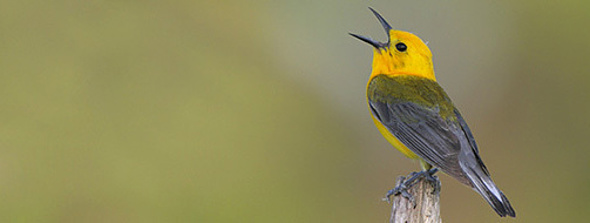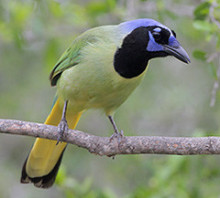Texas (Lower Rio Grande Valley)
Best run from December through February
The lower Rio Grande Valley is one of the most popular birding areas in the US. This region offers several species of birds that can’t be found anywhere else north of the US/Mexico border. This trip is a five-day birding and photography trip to "The Valley" with the goal of helping photographers create some stunning images of our South Texas feathered jewels. Our goal will be to see as many of the valley specialty birds as possible while capitalizing on the best photo opportunities. We will explore a range of habitats from the Gulf Coast to the Chihuahuan Desert with a boat ride out of Rockport, TX to photograph the endangered Whooping Crane.
We like to run this trip in the winter months so we can bird/photograph in relative comfort as south Texas can get quite hot in the summer months. This is also when many of the park/sanctuaries are feeding the birds making them easier to find. Finally these are the months when it is possible to see the Whooping Cranes.
This trip typically departs from Houston with out first night spent in Rockport. This allows us to look for and hopefully photograph Whooping Cranes.
Once we have had our fill of these magnificent white giants we have the option to spend some time looking for waterfowl such as Redhead, Northern Pintail, Lesser Scaup, Mottled Duck, Canvasback and more before having lunch and heading further south. We might have the opportunity to search for birds like Mountain Plover, Sprague’s Pipit, Harris’s Hawk, Crested Caracara, Chihuahuan Raven and Aplamado Falcon along the way. We will spend the night in South Padre Island but not before enjoying a wonderful seafood meal.
The next morning the island will provide us with more opportunities to photograph waterfowl, shorebirds, herons, rails and more. We hope to add birds like Piping, Semipalmated, Wilson’s and Snowy Plover, American Oystercatcher, Reddish Egret, Tricolored Heron, American Bittern, Clapper Rail, Virginia Rail, Sora, American Wigeon, Red-breasted Merganser, Mottled Duck, Blue-winged Teal, Northern Shoveler, Roseate Spoonbill, Osprey, Northern Harrier, Marsh Wren, Swamp Sparrow and more. This morning should give us an excellent opportunity to work on capturing many of these birds in flight.
After lunch we will have another chance to search for Aplamado Falcon, Chihuahuan Raven, Cassin’s Sparrow, Cactus Wren, Curve-billed Thrasher and more. That evening we will visit a parrot roost to look for birds like Red-lored, Red-crowned, White-crowned and Yellow-headed Parrot before heading for our comfortable lodging in Alamo, TX where we will spend the next two nights.
We will spend the next two days birding locations like Estero Llano Grande State Park, Bentsen State Park, Santa Ana NWR and similar locations in an effort to photograph as many of the valley specialties as we can. We will keep the schedule flexible as one can never tell when a rarity like a Crimson-collared Grosbeak, Black-vented Oriole, Masked Duck or Amazon Kingfisher from Mexico might pop up. Some of the birds we expect to photograph on this leg of the trip include Green Jay, Altamira Oriole, Northern Beardless-Tyrannulet, Bewick’s Wren, Green and Ringed Kingfisher, Clay-colored Thrush, Common Pauraque, Olive Sparrow, Harris’s Hawk, Gray Hawk, White-tailed Hawk, Great Kiskadee, Couch’s Kingbird, Long and Curve-billed Thrasher, White-eyed Vireo, Plain Chachalaca, Black-crested Titmouse, Buff-bellied Hummingbird, Green Parakeet, Bronzed Cowbird. Groove-billed Ani and Least Grebe. We may even get a glimpse of the rare Hook-billed Kite.
From Alamo we will make our way west to Rio Grand City where we will spend the last two nights of the trip. This will put us in position to search out some of the valley birds that prefer arid climes. Here we will focus on birds like Greater Roadrunner, Verdin, Black-throated Sparrow, Lark Sparrow, Cactus Wren, Pyrrhuloxia, Audubon’s Oriole, Hooded Oriole, Red-billed Pigeon, White-collared Seedeater, Scaled Quail and wild Muscovy Ducks.
We will spend our last morning trying to clean up on any species that we might have missed the previous day before heading back north to Houston. Along the way we usually make lots of stops for photos of raptors. We expect to be back in southwest Houston by 6pm.
This trip is designed to allow participants good opportunities to see and photograph the birds of the Lower Rio Grande Valley, covering all of the habitats available at a pace that allows our guests chances to get decent photos of the birds we encounter. As is the case with all trips we offer we make every effort to help you build your photographic skills and are always happy to answer any photography questions you may have.
The cost for this trip is typically around $1600 per person for at least two participants. The cost covers all transportation costs starting and ending in Houston, TX. It also covers all lodging, entrance fees and guiding fees. It does not cover meals or tips.
I recommend about five to six days to photograph the majority of the Lower Rio Grande Species. This itinerary can be easily modified to best meet your needs.
This trip can be run with as few as two people and as many as six. It is also possible to start and end the trip at one of the airports in the Lower Rio Grande Valley (Harlingin, McAllen or Brownsville).
If this sounds interesting to you please contact Greg Lavaty for details at greglavaty@yahoo.com






































